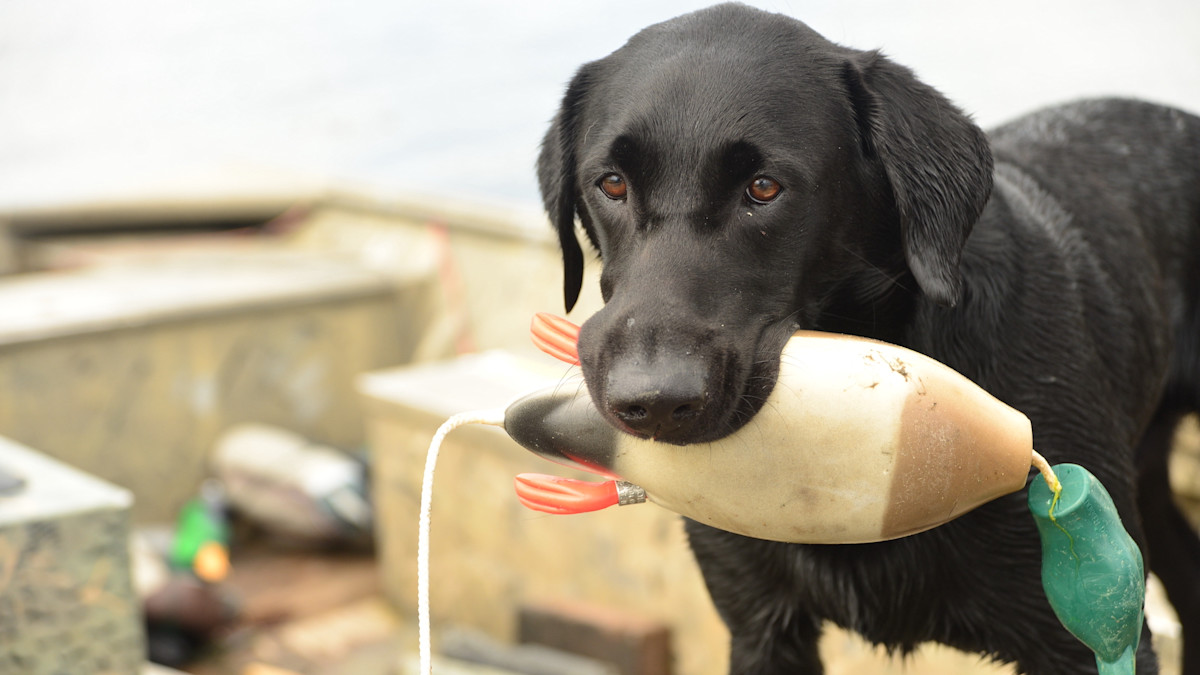
If you love following a flusher through the CRP in search of roosters, or maybe along an old logging road in the North country for ruffs, it probably doesn’t sound that appealing to go duck hunting. After all, who wants to go from active hunting to sitting and waiting for some migrators to strafe overhead?
I used to feel that way until I moved to a part of Minnesota that was short on upland opportunities but surprisingly long on waterfowl spots. I also had a golden retriever at the time that just wanted to retrieve anything with feathers.
As I made the transition to being a part-time duck hunter, so did my dog. It didn’t take long to realize that turning an upland flusher into a patient duck retriever required some serious training. Nearly all of which involves something unnatural to most dogs—steadiness.
The Importance of Patience
If you were to catalog natural retriever behaviors, sitting still wouldn’t even make the top 1,000 on the list. They are movers and seekers. They aren’t natural sitters and stayers.
The biggest trouble most folks have with upland dogs is recall. For waterfowl dogs, it’s steadiness. This means if you want a dual-purpose hunting partner, you have to work on having the control to keep them in their place.
This is easiest when you start with a puppy, of course. Making them wait even a few seconds before dinner, or while you unload the groceries, or do just about anything in life teaches them that they need to wait for your release. This is foundational, and it matters.
This is also one of the reasons place training is so popular. Teaching a dog that it has a spot, and it can’t leave that spot until released, does a couple of things. It teaches them to wait for you to give them the green light, and it teaches them to learn to relax. This last part is real important.
Wait, Wait, and Wait Some More
Most retriever owners run drills with bumpers and dummies. They mostly make their dogs sit at heel, then toss the bumper. Within a second or two, they send the dog. This conditions dogs to anticipate a quick release, and they start to cheat. While a retriever that quickly runs to a downed pheasant can be an asset in the field, a dog that jumps from the boat the moment a mallard hits the drink, is a liability.
One of the easiest ways to encourage steadiness in adult dogs is by making them wait to retrieve. Instead of sending them instantly, vary up the time they have to sit. If you make them wait for more than about half a minute, you’ll actually see their body language go from tense to relaxed.
This puts them on the right track to being a tolerable duck hunting partner. Do this in a variety of environments, both on land and in water (as long as they’ve been properly introduced to water). The more they realize that the game is the same no matter where they are, the easier it is to get a dog to be steady.
This is a start, but it doesn’t really take into account the excitement and frenetic action that can turn any duck hunt from a snooze-fest to an adrenaline dumper. You have to anticipate that change and train for it ahead of time, too.
All The Duck Elements
If you plan to use decoys, you have to introduce your retriever to them long before a hunt. If you plan to call, the same rules apply. Boats, kayaks, blinds, and every aspect of a duck hunt that you can replicate in training before an actual hunt will help your dog develop a been-there-done-that attitude.
With decoys, for example, you’ll want to start on land with a few hard-bodied fakes while running simple retrieving drills. The goal is to get the dog to ignore them in favor of you, and the dummy. After a soft intro, you can move them to a shallow pond and repeat the process. What you’re trying to do is eliminate surprises during the actual hunt.
This goes for calling as well. Working in a duck or goose call into your training sessions is a good start. If you plan to hunt with a few buddies, you better work gunfire into your training sessions (again, only after a proper introduction).
Keep It Simple
The best way to transition a straight uplander into a dual-purpose role is to keep it simple. A sunrise sit next to a small pond waiting on a few wood ducks is a good start. You don’t need to take a rookie waterfowl dog and try to do a marathon field hunt for geese with 10 of your closest buddies and their dogs.
Give your retriever the right training to understand what you’re likely to encounter during a hunt, and then keep it simple at first. You’ll see that not only does your wild uplander settle right down and sit tight, but that it won’t bat an eye when you start speaking greenhead in his ear or sending a few loads of nontox skyward.
For more info on training retrievers, give these articles a read: How To Encourage Prey Drive In Retriever Puppies, Why Socializing A Bird Dog Is Crucial, and Are You The Reason Your Bird Dog Sucks?



